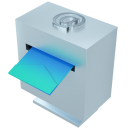我就废话不多说了,那就直接看代码吧~
inputs = Variable(torch.randn(2,2))inputs.is_cuda # will return falseinputs = Variable(torch.randn(2,2).cuda())inputs.is_cuda # returns true判断:
torch.is_tensor() #如果是pytorch的tensor类型返回true
torch.is_storage() # 如果是pytorch的storage类型返回ture
这里还有一个小技巧,如果需要判断tensor是否为空,可以如下
设置:通过一些内置函数,可以实现对tensor的精度, 类型,print打印参数等进行设置
torch.set_default_dtype(d) #对torch.tensor() 设置默认的浮点类型 torch.set_default_tensor_type() # 同上,对torch.tensor()设置默认的tensor类型>>> torch.tensor([1.2, 3]).dtype # initial default for floating point is torch.float32torch.float32>>> torch.set_default_dtype(torch.float64)>>> torch.tensor([1.2, 3]).dtype # a new floating point tensortorch.float64>>> torch.set_default_tensor_type(torch.DoubleTensor)>>> torch.tensor([1.2, 3]).dtype # a new floating point tensortorch.float64 torch.get_default_dtype() #获得当前默认的浮点类型torch.dtype torch.set_printoptions(precision=None, threshold=None, edgeitems=None, linewidth=None, profile=None)#)## 设置printing的打印参数判断变量类型:下面两种方法都行
if isinstance(downsample, torch.nn.Module):
# if torch.type(downsample) != torch.IntTensor:
补充知识:pytorch:测试GPU是否可用
废话不多说,看代码吧~
import torchflag = torch.cuda.is_available()print(flag)ngpu= 1# Decide which device we want to run ondevice = torch.device("cuda:0" if (torch.cuda.is_available() and ngpu > 0) else "cpu")print(device)print(torch.cuda.get_device_name(0))print(torch.rand(3,3).cuda()) Truecuda:0GeForce GTX 1080tensor([[0.9530, 0.4746, 0.9819], [0.7192, 0.9427, 0.6768], [0.8594, 0.9490, 0.6551]], device='cuda:0')以上这篇pytorch判断是否cuda 判断变量类型方式就是小编分享给大家的全部内容了,希望能给大家一个参考,也希望大家多多支持。








































 热门文章
热门文章





